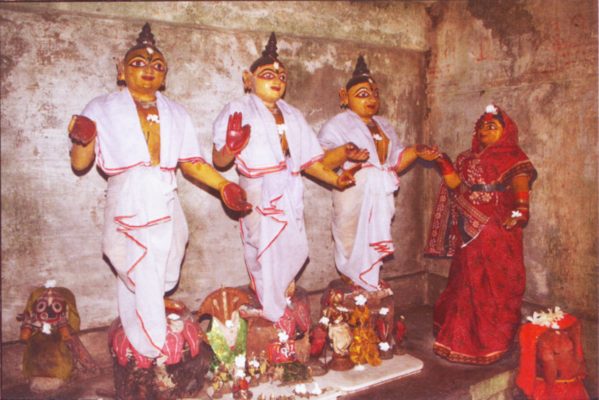
Ahula Matha
This Matha is located in Heragohiri Sahi (near police line). It is a very old temple in a bad condition. Sri Advaita Acharya stayed here. Sri Caitanya Mahaprabhu came here to take prasadam when he was invited by Advaita Acharya. There is also a Gambhira room, where the deities worshipped by Advaita Acharya reside: Sri Caitanya Mahaprabhu, Lord Nityananda, Advaita Acharya and his wife, Sita devi.
Atharanala
“Athara” means eighteen; this is a bridge of eighteen arches at the entrance to Jagannatha Puri. It has been said that Maharaja Indradyumna built this bridge. When he first commenced construction, he was unsuccessful again and again. Finally by the order of the Lord he offered the heads of his eighteen sons into the water of the river; only then was he successful in building the bridge.
Sri Caitanya Mahaprabhu first came to Puri via Atharanala Bridge, and there is a small temple marking the place where Sri Caitanya Mahaprabhu rested before he crossed (C.C. Antya 2.419-424). We also find the lotus foot print of Lord Gauranga Mahaprabhu.
Let us hear this beautiful pastime –
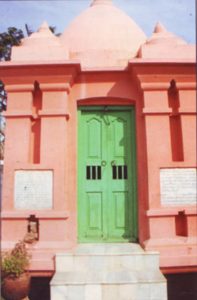
“Every year when the devotees from Bengal would come to associate with Lord Chaitanya here in Jagannath Puri during the four months of Chaturmasya, They would first come to Athranal. Very often Shri Chaitanya Mahaprabhu would personally come to meet them here and there was a wonderful celebration of ecstatic reciprocation between the vaishnavas. The essence of Goudiya Vaishnav sidhanta is very much understood through the loving exchanges between devotees. Without genuine loving exchanges between devotees we are only tasting from outside of the bottle of honey of what Krishna Consciousness actually is? Unless we humble ourselves as the servant of the servant of the Vaishnavas and genuinely learn to appreciate and serve devotees, the philosophy of Krishna Consciousness remains theoretical to our intelligence. But in the humble spirit of servitude and through the sincere chanting of the Holy name, the philosophy of Krishna Consciousness reveals the awakening of devotion within our hearts that is our purpose of life. So Athara Nala represents the place of the unity for the reunion of Vaishnavas. Shripad Advait Acharya, Nityanand Prabhu, Srivas Pandit, Shivanand Sen, Pundarik Vidyanidhi, Shriman Pandit, Shri Ram Pandit, Shrinidhi, Kholavecha Shridhar, Budhimant Khan, Murari Gupta, Acharya Ratna Chandra Shekhar. After Kartik, all the great souls along with their wives would leave Jagannath Puri. It would take one month practically to walk to Bengal and just in time for Rath yatra they would walk back. So over half year they would separate from each other specially Lords who loved his devotees more than his own life how much he longed to be reunited with his devotees. Ramananda Raya said the only suffering I know is to be bereft of the association of Vaishnavas. So here at AtharNala Shri Chaitanya Mahaprabhu would meet his beloved devotees. Lord Chaitanya wants as saying good bye to his devotees he began to cry in great love for them how much kindness you have toward me.
All of you go through so much terrible trouble just to come here to see me. I am remained enjoying in Jagannath Puri. But you are leaving your homes, you are leaving everything to travel a very very difficult and austere path across the whole country of Orissa and Bengal with so much trouble and difficulty you come here just to see me and then so much trouble again to come back. How much I am indebted to you. My life is your property. This was the mood of Lord Chaitanya’s love for his devotees. It is described in Shri Chaitanya Charitamrita and Shri Chaitanya Bhagavat how Lord Gourang Mahaprabhu would serve his devotees with so much care and attention. Here at AtharaNala He would offer garland on each devotee with his hands as well as offer them sandalwood pulp. He would also offer his obesences to the devotees. When all the devotees would meet at Narendra Sarovar. The Bengali devotees and the Puri devotees and all of them offering obeisances to each other not considering who is big or who is small, who is learned or who is not learned. Everyone was just offering the dandavat obeisances to each other Shri Chaitanya Mahaprabhu was offering obeisances to every devotee with loud loud chanting of the holy names and ecstatic dancing. In fact the chanting was so loud it filled the entire fourteen planetary systems. So what we will do now- is first worship these beautiful footprints of Lord Chaitanya. Srila Bhaktisidhanta Sarsvati Thakur had installed these footprints of Lord Shri Chaitanya Mahaprabhu here at Atharanala to commemorate the holiness of this place. As we have explained in Dand Bhanga Nadi, it was at Atharanala that Lord Chaitanya asked Lord Nityanand Prabhu, “Please give me my sanyasadanda. It was here that Lord Nityanand Prabhu devised this story. He said my Lord when you were at Kamalapur when you saw the temple of Jagannath you were in so much ecstasy you started dancing and chanting and you fell down and I tried to catch you we fell on the danda and it broke into three pieces and I do not know where it is. Lord Nityananda Prabhu spoke those words right now here standing. Lord Chaitanya said, “I will go to Puri alone. I will not go with you. You can either walk in front of me or behind me. Lord Nityanand Prabhu he said, “you can punish me in anyway you want I am an offender” and Mukunda Datt said “Please my Lord! you go in front and we will follow behind you. So it was here that Shri Chaitanya Mahaprabhu, with his ecstasy of love for Jagannath, began his famous journey to Shri Jagannath Darshan.”
Bali Matha
Bali Matha is located in Markandesvara Sahi, behind Bada Odiya Matha. This Matha was established by Srila Abhirama Thakura, who was one of the twelve Gopalas, or cowherd boyfriends, of Sri Nityananda Prabhu. One can have darshana of the deities worshipped by Srila Abhiram Thakura. Deities of Sri Sri Radha Krishna, Patita-Pavana Sri Jagannatha, Sri Radha-Madana Mohana vijaya vigraha, and Salagrama-silas are also worshipped on the altar.
Bhakti Kutir
Next to the Satasana Math (temple that honor the seven sitting places that the Sapta Rishi established), near the Swarga Dwar is Bhakti Kuti, where Srila Bhaktivinoda Thakura lived on and off from 1900-1910, after retiring from government service. Bhaktivinoda Thakura had stated in his will that this land should be given to the West Bengal Government. When the Government declared that any Vaishnava Society can undertake its responsibility, ISKCON took its responsibility and built a temple for the presiding deities Sri Sri Radha Giridhari & Caitanya Mahaprabhu.
Srila Bhaktisiddhanta Sarasvati Thakura’s Birthplace
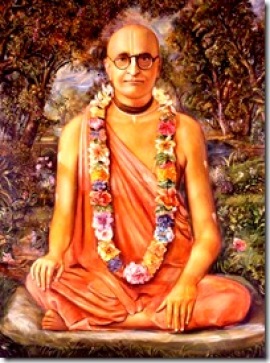
On Friday, February 6, 1874 (Magh 25, 1280 Bengali, 1795 Saka), at 3:30 P.M., in the home of Srila Bhaktivinoda Thakur, Om Vishnupada Srila Bhaktisiddhanta Saraswati Goswami Thakura appeared from the womb of Bhagavati Devi as an effulgent, golden-skinned child. It was Krishna Pancami of the month of Magh. The Birth place of Bhaktisiddhanta Saraswati is situated not far from the Jagannath Temple on the Grand Road in Puri, next to Narayana Chata Matha.
At that time, Srila Bhaktivinoda Thakura had been appointed by the British government as the Jagannatha temple administrator. He had prayed to Lord Jagannatha to give him one son who could preach Krishna Consciousness. When his wife gave a birth to a son, Bhaktivinoda Thakura named him Bimala Prasad, meaning the mercy of Bimala Devi, the Para Shakti of Lord Jagannatha.
Now this place is under Gaudiya Matha and entire house has been developed nicely, with a beautiful temple, devotee quarter, etc. Deities of Srila Bhaktisiddhanta Sarasvati Thakura are worshipped along with Radha Krishna, Caitanya Mahaprabhu and Jagannatha Baladeva Subhadra, in the same spot where he took birth.
Chataka-Parvata and Bhajan Kutir of Srila Bhaktisiddhanta Sarasvati Thakura
This hill is located in the area of Tota Gopinatha temple. It is a raised sand dune, and on top is now a Gaudiya Math temple and the Bhajan Kutir of Srila Bhaktisiddhanta Sarasvati Thakura. Srila A.C.Bhaktivedanta Swami Prabhupad, The Founder Acharya of ISKCON, spent a few days here. At present we can see raised heap of sands in front of Tota Gopinatha temple. Vaishnavas say this is Chataka Parvata. This Hill is not different from Giri Govardhana in Vrindavan as described in the pastime of Lord Caitanya in Caitanya Caritamrta Antya Lila 14.84-119.
Gambhira
Gambhira is situated south east of the Jagannatha temple in Bali Sahi, on the way to Svargadvara. This place is also known as Kashi Mishra’s house, also known as Radha Kanta Matha.
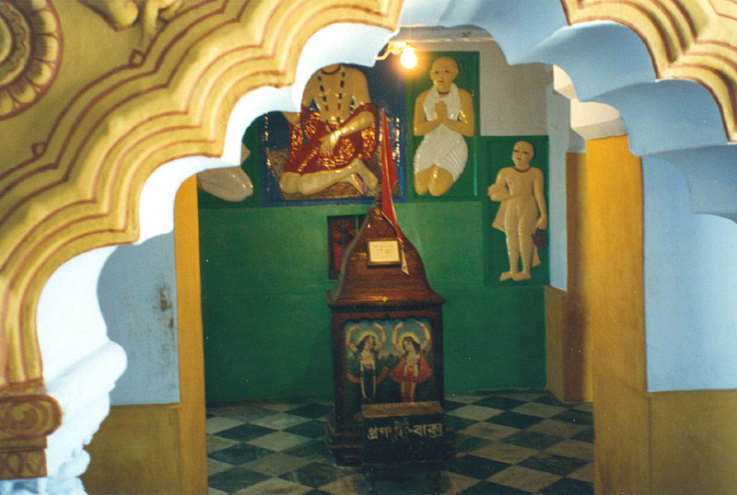
When Mahaprabhu came to Jagannatha Puri after taking sannyasa, He stayed at Sarvabhauma Bhattacharya’s House. After His return to Puri from South India he then stayed at Kashi Mishra’s House. Kashi Mishra was Rajguru of King Prataparudra, and King had gifted him a house with a large garden near the temple. King Prataparudra was a great devotee of Sri Caitanya Mahaprabhu; He suggested to Sarvabhauma that Mahaprabhu can stay in Kashi Mishra’s house.
Sri Caitanya Mahaprabhu stayed in Kashi Mishra’s house in a very small room called Gambhira. He stayed in Gambhira constantly for the last twelve year of His manifested pastime.
Inside the room there is a box which holds the Kamandalu, Paduka and quilt of Mahaprabhu.
Sri Radha Kanta is worshipped in Kashi Mishra’s house. King Prataparudra’s father, Sri Purusottama Deva, conquered the king of kanchipura in battle and returned with three deities: Radha kanta, Sakshi Gopala, and bhada Ganesha. Bhada Ganesha is still worshipped in an inner courtyard just behind Jagannatha temple. It is said Radha kanta was also worshipped inside the Jagannatha Mandir for some time. But Jagannatha informed King Prataparudra to remove Radha kanta deity because He is taking all nice items from His bhoga plate and so king requested to his Gurudev Kashi Mishra to take the Radha kanta to his house.
During the Kashi Mishra’s time only Radha Kanta was worshipped here. Later, when Gopala Guru became the Mahanta of the Matha, he installed a deity of Srimati Radharani on the left side of Sri Radha Kanta and a deity of Sri Lalita Devi on the right side. He also established the deities of dancing Gauranga and Nityananda on the left and right side of Radha Kanta.
The Gopala Guru, the disciple of the Vakreshvara Pandita. He served Mahaprabhu from early childhood at Gambhira. After the disappearance of Vakresvara Pandita, Gopala Guru received the charge of the seva of Sri Sri Radha Kanta and Gambhira. You can find deity of Gopala Guru at the entrance of Sri Radha kanta mandir, facing east.
Gundicha Mandira
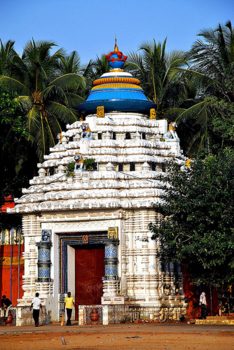
Gundicha Mandira is north east of the Jagannatha temple at the end of Badadanda or Grand Road. It is around two kilometer (one mile) from Jagannatha temple. In the Gundicha Temple there is a mahavedi where the deities of Jagannatha, Baladeva and Subhadra appeared during the time of King Indradyumna. This is recognized as the “birth place” of Lord Jagannatha, and is named after King Indradyumna’s wife, Gundicha Maharani. In this area King Indradyumna performed thousand Ashvamedha Yagnas.
Lord Jagannatha, Baladeva and Subhadra along Sudarshan, leave Jagannatha Mandira for nine days: one day for traveling to Gundicha, Seven days spent there, and one day to return home. This Journey is known as to Gundicha Yatra, Nava Dina Yatra (“nine days Journey”), or Ghosa Yatra. It is most auspicious to have darshana of Jagannatha at this time.
Darshana of Jagannatha during His stay at Gundicha temple is known as Adapa Darshana. It is said in scripture that darshana of the Lord Jagannatha at Gundicha temple is equal to ten darshana at Nilachala Temple (main temple). The place where the Gundicha temple is situated is also known as Sundarachala. It is compared to Vrindavana.
Samadhi of Haridasa Thakura
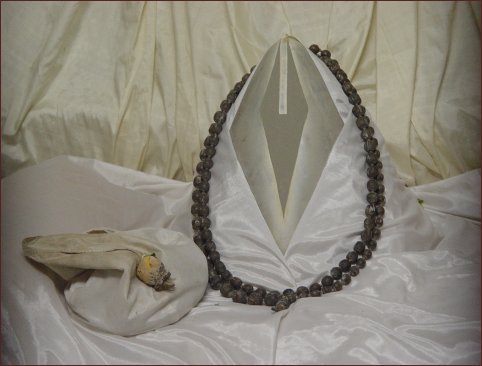
Srila Haridasa Thakura Samadhi is located on the oceanfront in the area of Svargadvara opposite to ISKCON temple (Bhakti Kuti). At the time of Mahaprabhu it was just a sandy beach. Here Lord Caitanya put the body of Srila Haridasa Thakura into Samadhi with His own hands. The actual Samadhi is in the courtyard as a small tomb.
Towards the west of the samadhi, there are three altars where the deities of Lord Gauranga, Lord Nityananda and Sri Advaita Acharya are worshipped. After the disappearance of Srila Haridasa Thakura, Lord Caitanya Mahaprabhu would come daily after taking bath in the ocean, offer prasada to Haridas Thakura Samadhi, and do Nama Bhajana for some time. Thus all the deities are in the sitting posture and doing Nama Bhajana.
Indradyumna Sarovara

Indradyumna Sarovara is spread over five acres of land near Gundicha temple. In this area King Indradyumna first came and performed thousand Ashvamedha yagnas, during that time thousand of cows were donated to brahmanas. These cows stood at this place and their hooves created holes in the earth, creating one large pond. The pond was filled with cow urine and water which King Indradyumna used for the sankalpa ceremony. Thus it becomes a Tirtha, and it is believed that all Tirtha has resides in this pond.
Some interesting pastimes which took place here are –“Shri Chaitanya Mahaprabhu and his associates would dance in great devotion chanting Hare Krishna Mahamantra and various beautiful songs about Krishna and Vrindavan. Throughout the entire day on the most auspicious celebration of Rathyatra. After this wonderful festival of chanting, dancing and feasting, Lord Chaitanya would every year bring his devotees this place. It is called Indradyumna sarovar. The devotees would become so much intoxicated chanting and dancing through out the day. When they came here in the association of Lord Chaitanya Mahaprabhu they were naturally in a very playful mood. Krishna das Kaviraj Goswami describes what type of beautiful pastime would take place here. All the devotees with very happily entered into the cooling refreshing purifying waters of Shri Indradyumna Sarovar.This lake was named after Maharaj Indradyumna. Maharaj Indradyumna was the king that originally installed Lord Jagannath Balaram and Subhadra in Nilachal many many ages ago. He incarnated within this age of Kali in order to participate in Lord Chaitanya’s pastimes as Maharaj Prataprudra. The devotees would come into Indradyumna Sarovar,in to the cooling, soothing refreshing waters, Lord Chaitanya would personally throw water on each devotee. In English it is called ‘Splash’, Chaitanya Mahaprabhu would personally splash each devotee. The devotees formed a circle around Lord Chaitanya and with great love and devotion they all began to through water on him. Then each two devotees would start having splash fight. It was very wonderful. Advaita Acharya and Nityanand Prabhu challenged each other (devotees laughed) to see who could throw more water of love on the other. Nityanand Prabhu defeated Advaita Acharya. And Advaita Acharya in retaliation and great affection for Nityanand Prabhu began to shout bad names upon him. Similarly Murari Gupta was splashing against Vasudev Dutt. Swarup Damodar Goswami was splashing with Pundarik Vidyanidhi, Shrivas Pandit was splashing with Gadadhar Pandit, Raghav Pandit was splashing with Vakreshwar Pandit. But the most wonderful astonishing of all these duals was that Sarvabhaum Bhattacharya was very enthusiastically having splash fights with Shrila Ramanand Ray.
Lord Chaitanya was watching all of these different pairs of devotees fighting each other with splashing of water and he was enjoying the great fun very immensely. Sarvabhauma Bhattacharya and Ramanand Ray completely lost all their gravity and began playing like children’s splashing water on each other. Lord Chaitanya spoke to Gopinath Acharya the brother in law of Sarvabhaum Bhattacharya. He said Gopinath; tell Sarvabhaum Bhattacharya and Ramanand Ray to stop behaving like playful children. They are supposed to be very great scholars and very grave and sober personalities. They have lost all their gravity. They are behaving like child. Gopinath Acharya smiled and said, That is because one drop from the ocean of your mercy has come upon their lives and it is expanding. One drop of your mercy completely inundate mount Sumeru and greatest of all Himalayan mountains. What are these two small hills Ramanand Ray and Sarvabhauma Bhattacharya compared to mount Sumeru. Your mercy has flooded them with love of God. Logic is like a dry oil cake where all the oil has been extracted from it. Sarvabhaum Bhattacharya passed his entire life eating these dry cakes of mundane logic and philosophy. But by your causeless mercy now he is drinking ambrosial nectar of the sweet pastimes of Krishna. This is the glory of your mercy, my Lord. Gopinath Acharya considered the playful spirit of these two most honorable respected, revered scholars in the entire world playing like little children. Splashing water and laughing. He considered that the sign of the causeless mercy of Shri Chaitanya Mahaprabhu which is inundating the whole world through the congregational chanting of holy name.Hare Krishna Hare Krishna Krishna Krishna Hare Hare Hare Ram Hare Ram Ram Ram Hare Hare.
Sometimes here at Indradyumna sarovar the devotees would go in circles and splash water at each other, sometimes one big circle, sometimes little circles, sometimes they would play cymbals, kartals, other times they would imitate frogs and would jump like frogs. And most of all they would make the sounds of singing frogs. Anyway they would make all these sounds. Then Lord Chaitanya Mahaprabhu instructed Advaita Acharya to assume his form of Shesh. Advaita Acharya laid down in the water and began to float. Then Lord Chaitanya Mahaprabhu laid on top of Advaita Acharya. In this way, He displayed His pastime of ‘Sheshsayi Vishnu’. Sheshsayi means Krishna lying on Shesha. Lord Chaitanya was laying on Advaita Acharya and they floated all around the entire Indradyumna sarovar. All devotees were ecstatically celebrating this beautiful darshan of Sheshshayi Vishnu. Lord Chaitanya was lying on the body of Adwait Acharya who was floating throughout the lake. Shri Indradyumna Sarovar Ki Jay. After spending many wonderful wonderful moments performing their loving pastimes in Indradyumna sarovar then Lord Chaitanya would go to ‘Ayi Tota’ the garden next to Gundicha Mandir. There He and His devotees took prasad. Shri Gourang Mahaprabhu Ki- Jay.
Jagannatha Vallabha Garden
It is believed that this garden existed since the construction of the temple of Lord Jagannatha. It is situated on the southern bank of Narendra sarovara, this is large piece of land where flowers and fruits are grown for the seva of Lord Jagannatha. Also different functions and spectacular celebrations are performed here. The garden has three temples. In one temple Radha Gopal Ji is worshipped. The second temple houses large deities of Jagannatha, Baladeva, Subhadra and Sudarshana Cakra. There is also one room with the Deities of Caitanya Mahaprabhu in Sannyasa dress sitting in front of Ramannada Raya. For the different festival like Damanaka yatra, Benta yatra, Dugdha Melan yatra, Lord Jagannatha comes in his Vijaya Vigraha from His temple.
This garden is very important for Gaudiya devotee because Sri Caitanya Mahaprabhu performed pastime here. Lord Gauranga used to meet here Ramananda Raya. Caitanya Mahaprabhu performed many pastimes here like deliverance of King Prataprudra. During Ratha yatra, He took rest here for nine days while Jagannatha stayed in the Gundicha Temple.
Mahaprabhu Vishrama Sthana
Leaving Nrsimhadeva temple and proceeding towards Indradyumna Sarovara, Mahaprabhu Vishrama Sthana is a few meter along on your right side.
After Gundicha Mandir Marjana (cleaning the Gundicha temple), Lord Gauranga Mahaprabhu took rest at this place.
Narendra Sarovara
Narendra Sarovara is situated to the north east of Jagannatha temple next to Jagannatha Vallabha Garden; walking along grand road towards Gundicha Temple, it is on your left side. This pond is also known as Sri Candana Puku, because Candana Yatra of Lord Jagannatha takes place here. From Aksaya trtiya (In the month of Vaishakha, or April/May) to Suklastami-tithi in the month of Jyestha (May/June), the Lord comes here to enjoy His boat festival. The Vijaya Vigraha of Lord Jagannatha, Sri Madana mohana, along with Lokanatha Mahadeva and other Deities, all enjoy a daily procession and boat ride during Candana Yatra.
Narendra Sarovara is 873 feet long and 743 feet wide. This pond was created during thirteenth century by Narendra Mahapatra. He was the minister to Kavi Narasimha Deva. Some say that great personality (narendra) King Indradyumna made this pond for the pleasure of Lord Jagannatha during His Candana Yatra. Candana Yatra is also known as Gandhalepan Yatra (Gandha means fragrances, and lepana means to smear the body with oils or pastes).
Paramananda Puri Kua
Srila Paramananda Puri was a disciple of Srila Madhavendra Puri and thus He was the godbrother of Srila Isvra Puri, the spiritual master of Sri Lord Gauranga.Lord Gauranga always paid respect to Srila Paramananda Puri as His Guru Varga. “Thus Lord Gauranga exchanged respectful obeisances with Paramananda Puri, who was very dear to Him”. Paramananda Puri established a small monastery behind the western side of the Jagannatha temple, where he had a well dug to supply water. The water, however, was bitter, and therefore Lord Gauranga prayed to Lord Jagannatha to allow Ganges water to come into the well to make it sweet. When Lord Jagannatha granted the request, Lord Gauranga told all the devotees that from that day, hence, the water of Paramananda Puri ‘s well should be celebrated as Ganges water, for any devotee who would drink it or bathe in it would certainly get the same benefit as that derived from drinking or bathing in the waters of the Ganges. Such a person would certainly develop pure love of Godhead.
Sarvabhauma Bhattacarya’s House
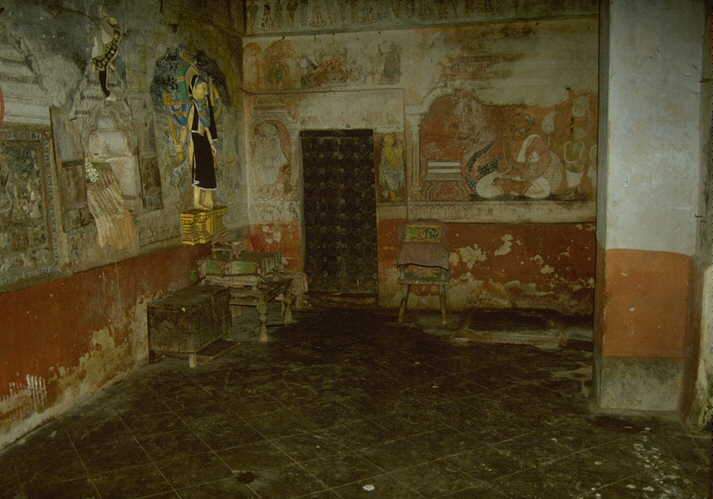
When Lord Chaitanya first came to Puri, He fainted in front of Deity of Lord Jagannatha and Sarvabhauma took Him to his home. Sarvabhauma Bhattacharya spoke to Lord Chaitanya in his house about the impersonal doctrine for several days and finally Lord Chaitanya defeated all his impersonalist conclusions and bestowed his causeless mercy upon him by showing His Shad-bhuja rupa, or six-armed form, a combined form of Lord Krishna, Lord Rama and Lord Chaitanya. The house is located opposite to the Sveta Ganga tank. There is Radha-Krishna deities called Radha-Rasikaraja in this house worshipped by Sarvabhauma Bhattacharaya.
There is a hidden tunnel in the house that is said to lead in two directions – to the sea and to the Jagannatha Temple. It is said that this tunnel was used by Sri Chaitanya.
Satasana Matha
This area situated next to the ISKCON temple, on the Satasana Road. The Saptarsis were performing their Bhajana at this place (“Seven Asanas”).
Sometime later a mathas was established at the place where the saptarishi sat, and deities were installed. The seven mathas were installed: Sri Bada Asana, Kadali patka Asana, Sri Giridhari Asana, Sri Gumpha Asana, Sri Madana mohana deva Asana, Sri Krishna balarama Asana, Sri Syamasundara Asana. Later, different associates of Mahaprabhu were doing their bhajan here and worshipping different deities.
Siddha Bakula
Siddha Bakula is located behind Kashi Mishra house. Sri Caitanya Mahaprabhu personally arranged for Srila Haridasa Thakura to reside at this place. Siddha Bakula is the bhajana kutir of Haridasa Thakur, the place where he chanted 3,00,000 names of Krishna daily.
Sri Chaitanya requested Haridasa, “Remain here and chant the Hare Krishna maha-mantra. I shall personally come here to meet you daily. Remain here peacefully, and look at the cakra on top of Lord Jagannath’s temple and offer obeisances. As far as your prasadam, I shall arrange to have that sent here.”
In order to provide shade for Thakur Haridasa, Sri Chaitanya planted a used tooth stick of Lord Jagannath. All of a sudden it grew up and appeared as a great shade tree. Rupa Gosvami recited Lalitha Madhava and Vidagdha Madhava under this tree to Sri Gauranga and his followers. During his stay, Sanatana Gosvami lived with Haridasa Thukur here. Haridasa Thakur left his body here and Lord Chaitanya danced in ecstasy here.
In course of time, the King of Orissa ordered his officers to cut down the tree here in order to construct Lord Jagannatha’s Ratha-yatra cart. Big amount of wood is needed, since the carts are about 13 m high and each year new ones are constructed. They come to cut this tree but Srila Jagannatha Gosvami objected, informing them that the tree had been planted by Sri Caitanya Mahaprabhu for giving shade to Haridasa Thakura. But they refused and decided to cut this tree in the next day. Overnight, the tree becomes hollow. The trunk remained standing, but its insides were empty. The next morning when the royal officers came they found the tree hollow and returned without cutting it.
The tree was not ordinary tree, having been used as a toothbrush for Lord Jagannatha, and then planted in the ground by Mahaprabhu’s own hand, and acting as shelter for Nama Acharya Srila Haridasa Thakura. The Tree had attained perfection, Siddha, and from that day on was known as the Siddha Bakula by all the local people.
People tie stones to this kalpa-taru (wish-fulfilling tree) and make their wishes.
Tota Gopinatha
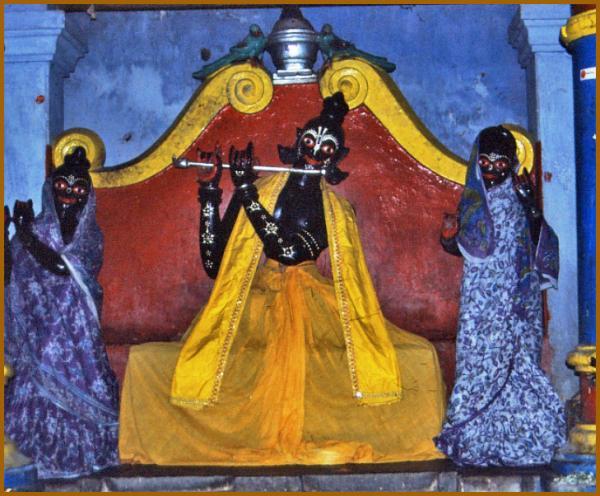
Tota Gopinatha temple is situated in Yameshvara tota next to Cataka Parvata. Towards the south of Yameshvara Mahadeva temple there is a small forest.
Gadadhara Pandita would read Bhagavatam every day to Caitanya Mahaprabhu. Once Mahaprabhu came here after taking darshana of Lord Jagannatha, where He saw Lord in his Syamasundara form. By seeing, he experienced the mood of separation from Krishna; He experienced the same feelings as he would in Vrindavana. He saw Cataka parvata as Govardhana, the ocean as Yamuna, and VataVrksha as Vamshi vata where Krishna played his flute to attract Gopi’s.
One day in same separation mood Mahaprabhu was digging the soil; He suddenly saw the top portion of a deity. He said to Gadadhara, “I have found a most precious thing here. Would you like to accept it?” And then together they removed from the sand a very beautiful deity of Lord Sri Krishna.
Mahaprabhu named the deity Gopinatha. As deity found in garden, which is called Tota in Oriya language, devotee started to address this deity as Tota Gopinatha. Mahaprabhu gave the responsibility of Tota Gopinatha’s service to His most dear Gadadhara Pandita.
Gaudiya Vaisnavas accept that Sri Chaitanya Mahaprabhu ended His manifested pastimes in Jagannatha Puri by entering into the knee of the Tota Gopinatha Deity. If you come in the morning around seven, you can give a donation to see the crack in His knee where Lord Chaitanya entered the Deity and left this world.
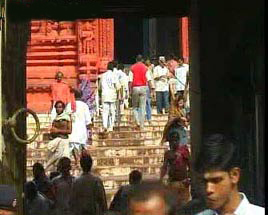
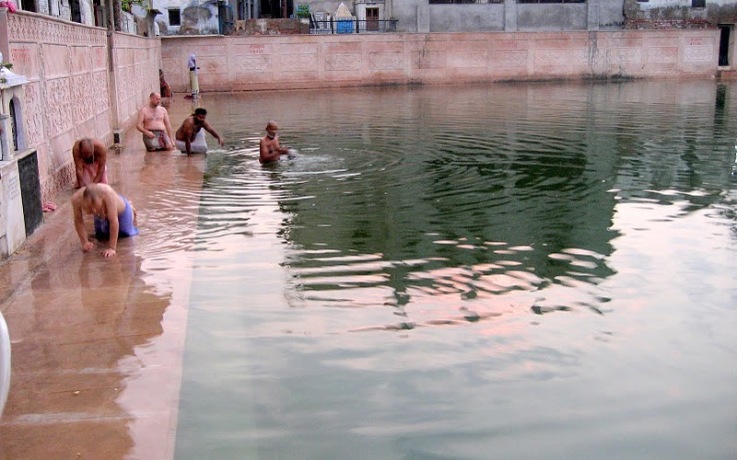
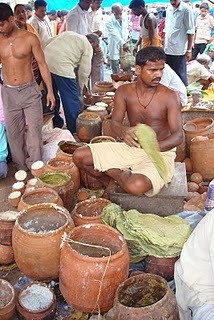
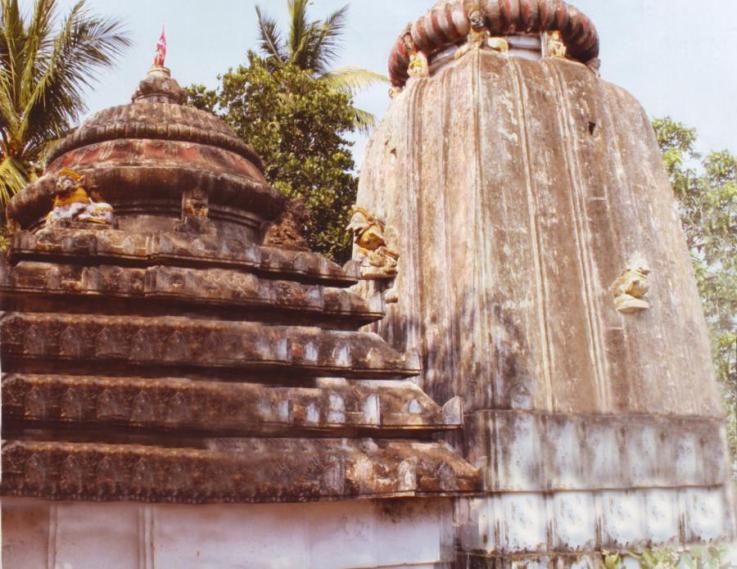
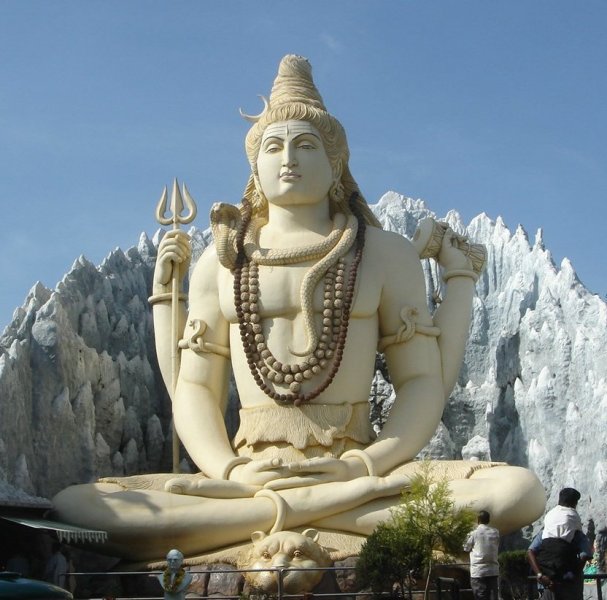
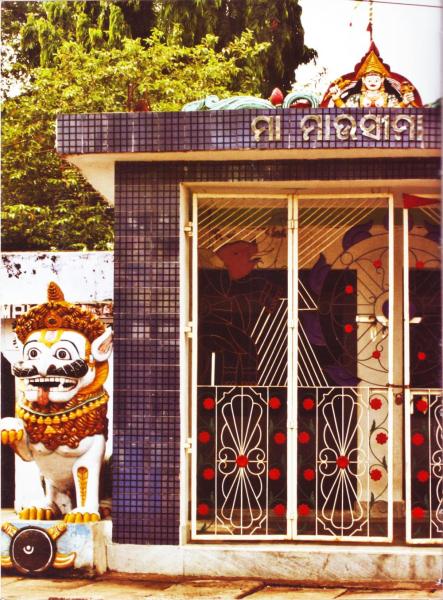

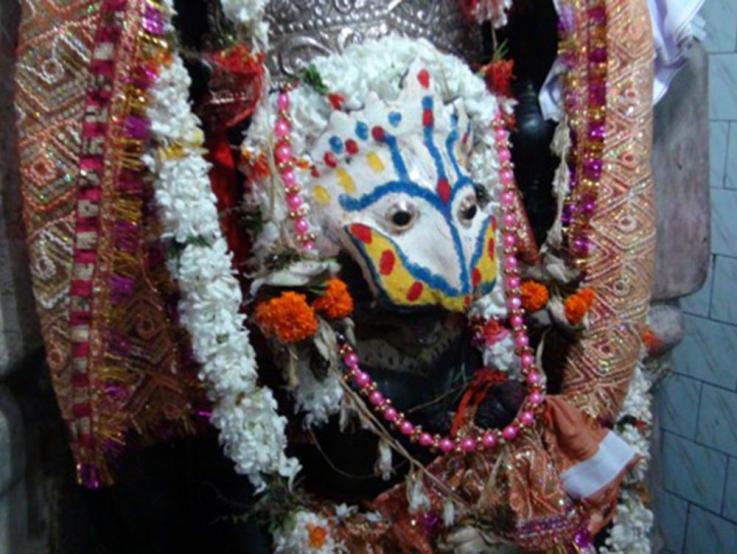









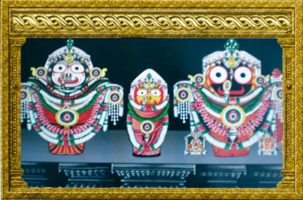
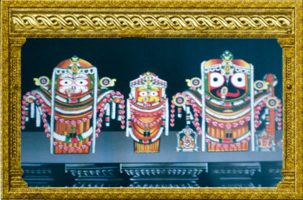
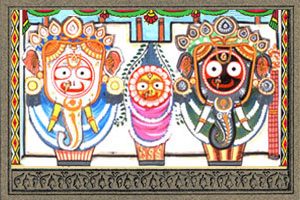
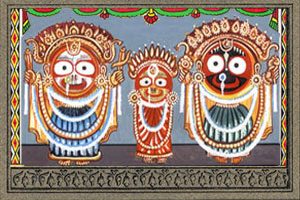
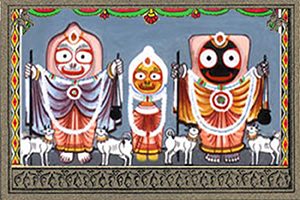 The Vanabhoji Vesha is offered to the Deities on the tenth day of the dark fortnight of the month of Bhadrapada. Their Lordships are dressed like cowherd boys going on a picnic in the forest with their friends. Many Gopis, Gopas, Cows, Birds and Peacocks made of Sola are placed on the altar to create the mood of Vrindavana. Vana means forest, and Bhoji means to take one’s meal.
The Vanabhoji Vesha is offered to the Deities on the tenth day of the dark fortnight of the month of Bhadrapada. Their Lordships are dressed like cowherd boys going on a picnic in the forest with their friends. Many Gopis, Gopas, Cows, Birds and Peacocks made of Sola are placed on the altar to create the mood of Vrindavana. Vana means forest, and Bhoji means to take one’s meal.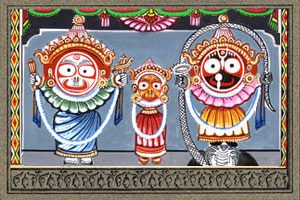 This Besha is being celebrated to commemorate how Krishna controlled the proud Kaliya, the multi hooded snake residing in Kalandi lake at the bank of river Yamuna and forced him to quit the lake along with his family. A huge snake is built (30 feet) long for the Besha purpose. The hood of the snake placed at the feet of Sri Jagannath at the time Besha. Everything is made of Sola. This Besha is continued till completion of Sandhya Dhupa. (Evening dhupa).
This Besha is being celebrated to commemorate how Krishna controlled the proud Kaliya, the multi hooded snake residing in Kalandi lake at the bank of river Yamuna and forced him to quit the lake along with his family. A huge snake is built (30 feet) long for the Besha purpose. The hood of the snake placed at the feet of Sri Jagannath at the time Besha. Everything is made of Sola. This Besha is continued till completion of Sandhya Dhupa. (Evening dhupa).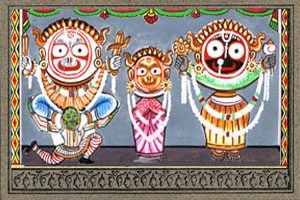 On the 12th day dark fortnight of the month of the month of Bhadrapa Jagannatha is offered the Vesha known as Pralambasura or Pralambavadha. In the Krishna lila (Dwapar yuga) to celebrate the killing of a demon named Pralambasura by Lord Balarama, Lord Balaram(Baladeva) wears this decoration known as the Pralambavadha vesha. This Besha is made on Baladeva only while Jagannath & Subhadra remain in general form.
On the 12th day dark fortnight of the month of the month of Bhadrapa Jagannatha is offered the Vesha known as Pralambasura or Pralambavadha. In the Krishna lila (Dwapar yuga) to celebrate the killing of a demon named Pralambasura by Lord Balarama, Lord Balaram(Baladeva) wears this decoration known as the Pralambavadha vesha. This Besha is made on Baladeva only while Jagannath & Subhadra remain in general form.